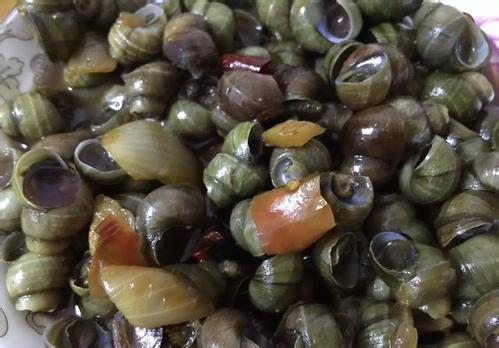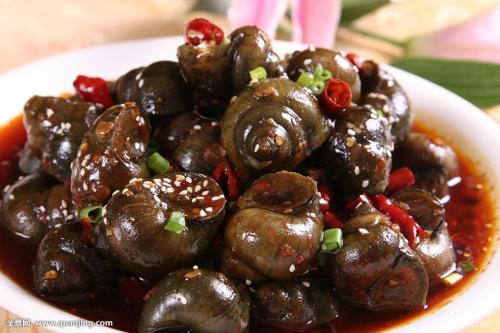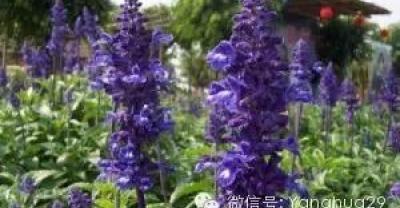Several key points of artificial cultivation of field snails

At present, there are fewer and fewer wild field snails, and they are polluted by pesticides and chemical fertilizers, so people do not dare to import them, so artificially cultivated field snails are welcomed by the market. I would like to introduce to you some key points of artificial farming snails, as follows:
1. Build the infrastructure. Strengthen the ridge of the field, build an anti-escape wall, open a turtle ditch, set up an escape net at the inlet, and store duckweed, algae and water peanuts in the turtle ditch. The water quality requires fertilizer, activity, tenderness and freshness, and the pH value is about 7.5.
two。 Choose a good seed. Soft-shelled turtle species require neat specifications and strong physique. Snail and Loach species had better be collected in natural water bodies such as ditches, canals and ponds. The field snail reserved for planting requires a large, round shape, thin shell, gray-black shell and less thread; Loach requires dark yellow, robust and neat specifications; rice varieties require lodging resistance, disease and insect resistance and high yield.
3. Early stocking. After planting seedlings in single-cropping rice fields, Loach and snail are released; in winter fallow fields, Loach and snail are released first, and then seedlings are planted, and double-season stocking can also be adopted: the first season is stocked in the first ten days of May; the second season is released in the middle of August, and Loach species with a body length of 5cm and 7cm are released in the first half of the year and 3 cm in the second half of the year, with 10,000-2.5 snails per 667 square meters and 600 mollusks per 667 square meters at the same time. Every 667 square meters, 100 young soft-shelled turtles with a tail weight of 100ml / 200g are released. Soft-shelled turtle, Loach and snail species were washed and disinfected with 5% salt water before stocking.

4. Feeding and management
(1) fertilizing water quality. The breeding of snails and Loach focuses on improving the water quality. 250 kg-500 kg rotten plants are applied as base fertilizer every 667 square meters before transplanting, and then topdressing every 30-40 days according to the water quality. The water transparency is controlled at 15-20 cm, and the water color is yellowish green.
(2) feed properly. The feed consists of fish meal, bean cake, rice bran, flour, blood powder, yeast powder and so on. Loach and snail can be eaten.
(3) the feed is mixed and kneaded into a ball and fed with water, and the daily feeding amount is 5% of the body weight of Loach and snail, and properly adjusted according to the water quality, weather, feeding conditions, etc., during the peak growth season in July-September, the daily feed is increased to 10%. The paddy field is rich in live bait, and generally there is no need to add animal feed to the soft-shelled turtle.
(4) adhere to the principle of "comprehensive prevention, active treatment, prevention is more important than treatment", strengthen feeding and management, regularly disinfect water bodies, reduce the occurrence of diseases, take ecological measures for the prevention and control of diseases and insect pests, avoid the application of pesticides as far as possible, and persist in early field inspection. Solve problems in time.
- Prev

Goat farming, did you raise it right?
Mutton is one of our main edible meats, which is delicate, delicious and rich in nutrients, so it is also a good tonic in winter. According to the class Materia Medica.
- Next

How to start scorpion breeding?
First of all, it is necessary to determine the scale and mode of culture: the scale of introduction should not be too large, generally as little as 300,500,500 and up to 2000 and 3000. The number of scorpions
Related
- On the eggshell is a badge full of pride. British Poultry Egg Market and Consumer observation
- British study: 72% of Britons are willing to buy native eggs raised by insects
- Guidelines for friendly egg production revised the increase of space in chicken sheds can not be forced to change feathers and lay eggs.
- Risk of delay in customs clearance Australia suspends lobster exports to China
- Pig semen-the Vector of virus Transmission (4)
- Pig semen-the Vector of virus Transmission (3)
- Five common causes of difficult control of classical swine fever in clinic and their countermeasures
- Foot-and-mouth disease is the most effective way to prevent it!
- PED is the number one killer of piglets and has to be guarded against in autumn and winter.
- What is "yellow fat pig"? Have you ever heard the pig collector talk about "yellow fat pig"?

